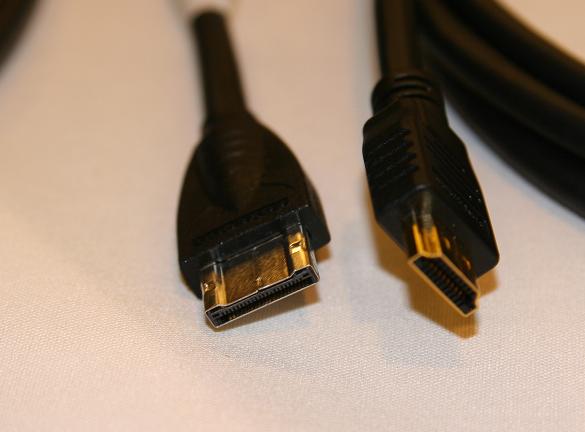UDI (Unified Display Interface)
Time for VGA to be replaced with a digital interface, but USI is the first to step up to the fold without costing too much in royalties.At previous IDFs Intel has spoken about this technology group, which they are a member of, basically bringing a unified connection (since at the moment we have DVI/Dual DVI, VGA, HDMI, Component, and many others) for monitors.
The aim is that it will be a single connector to replace VGA, and before we hear you all complain about another graphics connector the previous ones such as DVI have had flaws such as the amount of bandwidth which they push, and only 30% market penetration.
The reason for the change is that we need a protocol and cable which can carry HDCP protected content. With the CE devices using HDMI there needs to be one for the PC.
HDMI looks like it will be the interface for the consumer electronics platform but this has downfalls, the biggy being the fact it needs a $15,000 license and royalties on a per unit basis too.
UDI is a display only interface, it doesn't carry audio and is backwards compatible with DVI/HDMI and will be able to connect to VGA via a connector (break out).
The products will initially launch this year as an add-on card for current main boards but with the low cost this will eventually be incorporated into integrated chipsets.
The UDI protocols are optimized for low power, and to be cheap to produce. The 0.8 specification has been published and by the end of Q2 2006 we will see the publication of 1.0.
We managed to snag some shots of an "engineering sample" cable; this sample is a HDMI to UDI unit.














